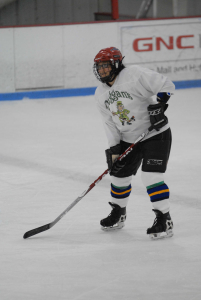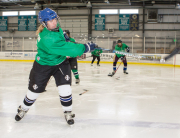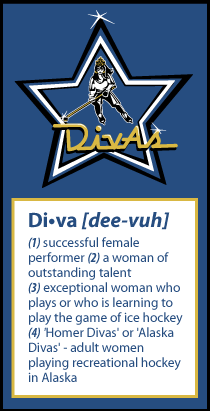 There is something funny about the game of hockey. Some nights it is a thing of beauty. Some nights it is a gong show. I have found the most important determining factor is good hockey happens when players work hard without the puck to get open, to drive lanes, to anticipate and to support. When players watch the puck holder and spectate it is bad.
There is something funny about the game of hockey. Some nights it is a thing of beauty. Some nights it is a gong show. I have found the most important determining factor is good hockey happens when players work hard without the puck to get open, to drive lanes, to anticipate and to support. When players watch the puck holder and spectate it is bad.
I once asked the Divas what they were feeling when they were playing good hockey and what they were feeling when they were playing poor hockey as a team. They said that they were playing good hockey when they drove the net, made give and goes and got to open ice, and got pucks to the dangerous areas of the ice. The poor hockey feeling (when nothing good was happening) they said they were staring at the puck. They were waiting in lanes or just moving up and down lanes instead of coming back to the puck and moving to open ice at an angle.
Most of the game is played without the puck. You should always work hard to give the puck holder options with support.
During the Divas Jamboree last month where players are mixed with players from all over the state I made some notes about the biggest contributors to that poor hockey feeling.
These five mistakes lead to that bad hockey feeling:
1. Skating away from, rather than, supporting the puck carrier. Everyone wants to go down a lane rather than heading across the ice east and west or on an angle. Related to this is turning your back to the puck in the Neutral Zone and trying to catch passes from behind. Both lead to missed passes and icing.
Read The Fun-damentals: Support the Puck
2. Wings are too high on the break out. The defenseman gets the puck and the wings are leaving the zone before they have the puck. The Point pinches and takes it away. Related to this: defensemen on the break out don’t misdirect or reverse and come out the weak side. They make rim passes on the breakout that are slow developing and easy to pinch.
We always instruct our defensemen to misdirect or move the puck D to D behind the net to come out the weak side. We want them to come out with a clean pass (not on the rim) to a low stationary wing who has time to gather the puck and start up the wall to make a play to get it out of the zone. Centers should think about leaving the zone low and slow and don’t leave the D Zone unless the puck leaves it first.
3. No Offensive Zone time or cycle. This means there is a rush up the ice, maybe a shot, and back you go 200 feet to the other end of the ice chasing the other team. If the team does enter the zone and keeps the puck then the other team clogs up the center of the ice. There is one shot in traffic that doesn’t make it to the net. No one uses all the ice to pull the defensemen out of the middle of the ice. There is no puck protection or patience, cycle or triangle passing attack. All rushes and no O-Zone time gives us the bad hockey feeling.
It is hard to play with players you haven’t played with before who might be new to these concepts. We coach that we need to use all the ice, protect the puck, be patient along the wall, use the special areas of the ice (area behind the net, seams off the half wall and high slot) and to use the cycle and triangle rotation in the Offensive Zone. We try to pull the defensemen out from the front of the net and spread everyone out by moving the puck high to low, from the point to the half wall to the goal line, then look for someone to get to the scoring position in the slot.
4. Bad passes to areas. No tape to tape passes. Too many indirect bank passes off the wall and too many rim passes. Too many passes in the skates. These all lead to the bad hockey feeling.
So many players are trying so hard to move their feet and focus on one option they telegraph passes or just get it to an area. The receiver gets all twisted around and can’t catch it.
Passing skills need to be worked on constantly. I’m amazed when players start moving competitively in a game they seem to lose their passing skills. I try to get players to look at passing options in practice: pull it back like they are going to pass there, look it off, then change orientation to another option. It is a thought process of “no not yet, or no that is covered, or no there are still a stick in the passing lane, so I’m going to pass somewhere else.”
5. The flip side of bad passing is a player who doesn’t present herself to the passer in a way where she can catch it or shoot it. Also players who stay covered or in the shadow of the other team’s player 60 feet away is never going to get the puck. This leads to the worst kind of hockey. Good players get tired of having their passes misplayed. They decide to go coast to coast. Everyone else spectates.
We are constantly talking about supporting the puck. Present yourself to the puck carrier, stick on the ice, blade perpendicular to the pass. Take three strides into open ice with purpose. Get your head turned in a tight pivot so you never lose sight of it. Open up and use Mohawk turns to present yourself to the puck carrier. Get out of the shadows and come back to the puck for a 15 foot passing option. Orient yourself so that when you get the puck you can get a shot off.
When players support the puck and anticipate where they can move to open ice in support we get that good hockey feeling again.





Leave A Comment